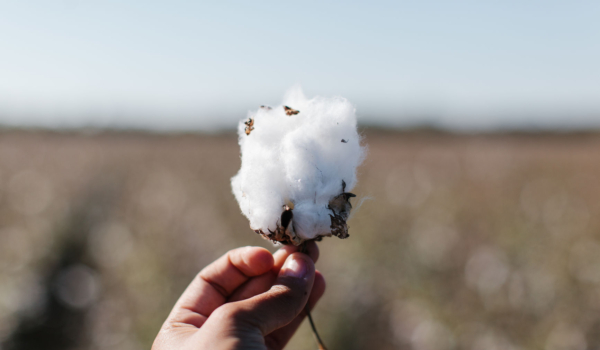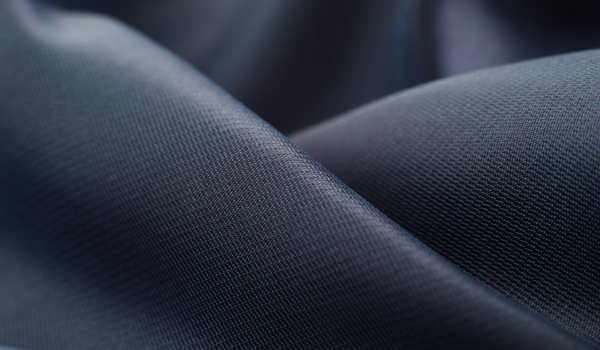One can hardly avoid admitting that synthetic fibers certainly have their raison d'être with regard to textile properties. Polyester and other synthetic fibers are frequently used in the fashion sector not only because they are particularly inexpensive, but also because they have properties that no natural fiber has yet been able to fully replace. Less justifiable, however, are the effects of plastic on the environment - the compromise: recycled synthetic fibers.

Properties of synthetic fibers in clothing textiles
Especially in the sports and swimwear sector, synthetic fibers are very hard to imagine without, because nothing dries as quickly as a polyester fabric and thus also retains its lightness. Synthetic fibers are also unsurpassed in terms of elasticity, which makes them very popular, especially in the sports and athleisure segments. Water stains are also often invisible on synthetic materials. Stains caused by contamination are usually easier to remove from polyester materials than from natural fiber textiles such as cotton. Another benefit is the dimensional stability and "wrinkle-free" nature of synthetic textiles.They also shrink only with difficulty compared to natural fiber products such as and remain completely wrinkle-free.
The dual meaning of longevity
A bit contradictory in nature is the longevity that comes with synthetic materials. In principle, it is praiseworthy in the fashion sector if a product can offer a long life cycle, but: If a cotton shirt does give up the ghost, it can be composted. The situation is different with synthetic materials. If it ends up in the sea, for example, it takes decades to centuries for the material to completely decompose, depending on the form it has taken.
The dual meaning of longevity
A bit contradictory in nature is the longevity that comes with synthetic materials. In principle, it is praiseworthy in the fashion sector if a product can offer a long service life, but: If a cotton shirt does give up the ghost, it can be composted. The situation is different with synthetic materials. If it ends up in the sea, for example, as it often does, it takes decades to centuries for the material to completely decompose, depending on the form it has taken. For example, a plastic bag can take up to 20 years, a cup up to 50 years and a plastic bottle up to 450 years.On the way, however, this garbage first kills some sea creatures and, when it has then dissolved, it is far from having disappeared and becoming inestimable.
As microplastics, the material enters the food chain via fish - and in turn becomes a danger to humans and animals.

Plastic waste keeps growing
More than 100 million tons of plastic waste are already floating in the oceans, and eight million tons are added every year. By 2050, experts estimate, there will be more plastic in the oceans than fish. The solution, one would assume, would be to massively reduce plastic production and work on alternatives. But because it's so pleasingly handy and, above all, cheap, plastic production will instead increase by a further 40% over the next ten years, according to an expert estimate, reports the Guardian. Various companies, including some from the oil & gas and petrochemical sectors, have accordingly poured more than $180 billion into new plastic factories since 2010, where they plan to produce packaging, bottles, transport containers and the like in the future.
What we are left with are efforts to use the existing and coming plastic as sensibly as possible or to recycle and reuse it. Recycling is the big topic on everyone's lips. Surprisingly low, however, are the figures on this.
Although the recycling rate for plastic in Germany is more than 90 percent according to industry data, this refers exclusively to the plastic that is disposed of in the intended way. If we also take into account all the plastic waste that ends up in the wrong garbage can or is thrown away in the wild, the recycling rate in Germany is unlikely to be more than 60 or 70 percent - if at all.
But even in this respect, Germany already performs well in an international comparison. This is also confirmed by a U.S. study that determined the amount of plastic produced worldwide since the 1950s and compared it with the amounts of plastic waste that have made it into a recycling loop.
8.3 billion tons : 600 million tons. That equates to a long-term recycling rate of just over seven percent worldwide.
Recycled polyester is better for the planet
Recycled polyester, also known as recycled polyethylene terephthalate or rPET for short, has a smaller carbon footprint than its virgin PET counterpart. A 2017 lifecycle analysis found that the production of rPET produces 79% fewer carbon dioxide emissions than PET.Polyester, which is typically derived from petroleum-based resources, accounts for more than 65% of the fiber used in the textile and apparel industry, meaning that using rPET as a direct replacement immediately relieves pressure on dwindling finite resources.
Recovering plastic waste also prevents it from becoming trash - or food for marine animals like turtles and whales.
To promote transparency, certain manufacturers like Repreve can label rPET throughout the value chain, from bottle collection to delivery of the finished product.

Recycled polyester in textiles is not a final solution
In addition to numerous proponents, critical voices also comment on this solution and describe it as a shift and delay of the main problem. Because even as a textile, the material will not remain in use forever and will eventually reach the landfill or directly the incineration plant. While burning plastic can generate energy, it can also release toxic fumes that can have a serious impact on the environment and health.
Another argument, which relates more to the displacement of the problem, is that clothing made from recycled polyester emits microplastics in the washing machine just like the plastic bottles floating in the oceans. The Guppyfriend Washbag aims to remedy this situation. A laundry bag for clothes made of plastic fibers that filters the microplastics in the wash cycle and prevents them from entering the sewage system.
Conclusion: Appreciate efforts
While some industries seemingly don't blink an eye at the ongoing, even increasing, production of plastic, others are trying to minimize the damage or find solutions to make something useful out of the heritage that is left to them unquestioned. Admittedly, the solution is not yet fully developed, but it is going in the right direction. And of course, in the fiber sector, work is also constantly being done to find alternative solutions for synthetic fibers, but it's still nowhere near enough to cover all the demand (not even in the sportswear sector). When the time comes, this will certainly be gratifying for the textile industry, but it will still not be a solution with regard to plastic waste as a worldwide problem that encompasses almost all areas of life.
 Stefanie Rudolph
Stefanie Rudolph







